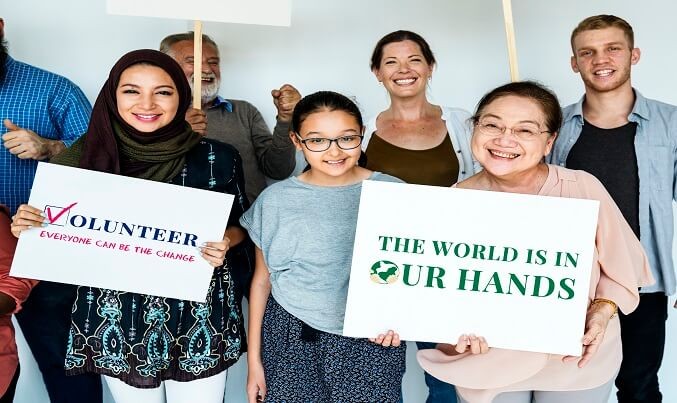Climate change is an alarming environmental issue caused by our everyday actions. Carbon dioxide levels have increased dramatically over the years because of the use of fossil fuels. The ozone layer has been getting thinner and thinner over the years. This is caused by burning fossil-fuels caused by human activities such as the use of Chlorofluorocarbons (CFCs) (Lockwood, 2009). This is found in many everyday items such as air-conditioning units, refrigerators, aerosol sprays, and styrofoam. Although many alternatives have replaced harmful chemicals in the said items, the effects of it are still felt today. In fact, it is still not clear if the substitutes used for CFCs, namely Hydrofluorocarbons (HFCs) also harm the environment (Empa, 2012). Another cause of climate change includes cutting down trees and agricultural lands for the purpose of urban use. Each year, an estimated number of 15 billion trees are cut down yearly. In fact, trees have gone down by 46 percent since the start of human civilization. And at the rate we are going today, rainforests can be a thing of the past in about a hundred years (National Geographic, 2015).
Climate change is currently a pressing issue everyone in the world faces. Whichever part of the world you live in, your capacity to provide, there’s no escaping climate change. Generally, speaking, the world is predicted to get even warmer, with some regions getting wetter. Likewise, the areas in which crops grow best might also start to differ due to climate change. Because of the pressing issue we’re experiencing, initiatives have already been led by a number of NGOs. Several funds for NGOs in developing countries have been available, each with their own focus. Usually, funds are divided into two categories namely climate change mitigation and climate change adaptation.
Climate change mitigation addresses what people are capable of doing to decrease the effects we experience. Examples of climate change mitigation include promoting renewable energy products such as solar panels, windmills, renewable jet fuel, drones, etc. apart from that, a number of funding agencies for project proposals support tree-planting activities. For example, if they’re interested to fund projects on tree-planting, the likelihood of them supporting projects that involve promoting the use of renewable energy will be pretty low. Thus, when seeking for grants, seek for the organization which supports projects similar to your proposal’s focus area.
On the other hand, climate change adaptation aims to guard the communities and their livelihoods. Basically, this is an effort in reducing the risks and effects of climate change. For example, the effects of climate change greatly affect the livelihoods of those in the agricultural sector or otherwise known as the people behind food production. Because of that, farmers are taught alternatives to planting, also learn to plant different crops which are not as sensitive to climate. Other things climate change adaptation focuses on are infrastructure and sustainable development. Consumers should understand that if we continually live in the same practices and consumption that we do today, the following generations will not be able to enjoy a safe and clean world.
Before considering to apply for several grants to implement projects which address issues on climate change, it is important to research on the specific issues grant-funding agencies are interested in. determine if it is in line with your project proposal, as well as the NGOs or nonprofits they have worked with in the past. Organizations such as the United Nations, the World Bank, the European Commission, and many more have been providing grants, each with different focus areas.
Some organizations who offer grants for climate change related issues are the following:
1. The Rockefeller Foundation
The Rockefeller Foundation has mostly supported climate change adaptation projects in the past. Being one of the biggest funders for climate change, they have many programs specializing in different areas. One of their programs focuses on building the resilience of agriculture in Africa. Likewise, they also have programs looking towards urban environments in Asia. Grants from this foundation range from USD25,000 and can go up to USD 1,000,000.
2. Norwegian Climate Change and Forest Initiative
For Norwegian Climate Change and Forest Initiative (NCCFI), deforestation is the most alarming issue. They support climate change mitigation projects specifically reforestation. Apart from tree-planting activities, NCCFI also aims to put a stop to the cutting down of forests given that there is a greater need for forests over additional urban development.
3. Clean Technology Fund
The Clean Technology Fund grants funds to organizations who can successfully provide proposals which focus on greenhouse gases. The fund which is provided by the World Bank Group, European Bank for Reconstruction and Development, African Development Bank, Asian Development Bank, and the Inter-American Development Bank supports the use of renewable energy and is interested in funding organizations who can optimize the use of it. So far, many of their recipients come from regions in Mexico and South Africa where they believe needs additional guidance in this area.
4. WCS Climate Adaptation Fund
The WCS Climate Adaptation Fund is one of the largest organizations who has been providing funds since 2011. They support adaptation projects which inform more individuals about the effects of climate change through video projects which can be shown across the world. Additionally, they also fund organizations who plan to do ted talks which would again inform and educate people to care more for the environment.











